Affiliate disclosure: This post may contain affiliate links. Please see our Privacy Policy.
Making yogurt cheese at home requires minimal ingredients and effort; learn how to make this creamy cheese using your favorite store-bought or homemade cultured yogurt.
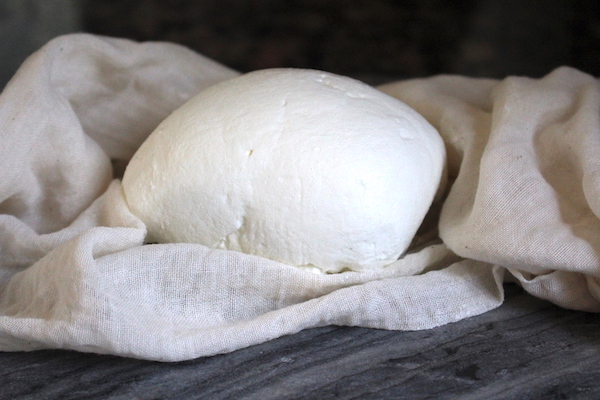
If you’ve never made your own yogurt cheese, prepare to be wowed by how simple the process is. Using only one ingredient and a few very basic pieces of kitchen equipment, you can create a tangy, spreadable cheese with almost no effort (I wouldn’t say zero effort, but if you can spoon the yogurt into cheesecloth, you’re halfway there…).
Once the yogurt cheese is ready, you can add any and all flavors you’d like to create any number of dips and spreads.
What is Yogurt Cheese?
Thick and creamy, yogurt cheese is made from yogurt that has been strained, to some degree, of its whey. In the Middle East, yogurt cheese is called labneh, where it’s made with the addition of salt and a touch of lemon juice.
If you’ve ever had the pleasure of eating authentic Greek tzatziki, you’ve most likely enjoyed a form of yogurt cheese.
Yogurt cheese has the texture of very thick yogurt or cream cheese, depending on how much whey is removed from the yogurt.
The fact that it’s naturally lower in fat than other spreadable cheeses has made it popular in North America and its uses include dips, spreads, and yogurt balls — it can even be used to partially or completely replace traditional cream cheese in a cheesecake.
I like to make an easy dip with yogurt cheese by stirring in a handful of loosely chopped fresh herbs, a few scallions, and finishing it off with a drizzle of olive oil and a sprinkling of za’atar, sesame seeds, or nigella seeds.
It can also be made into a sweet dip for fruit or pita bread by adding honey, grated orange zest, and a pinch of cinnamon.
Yogurt cheese is truly a blank canvas for almost any flavor, and once you see how simple it is to make it will become a household staple.
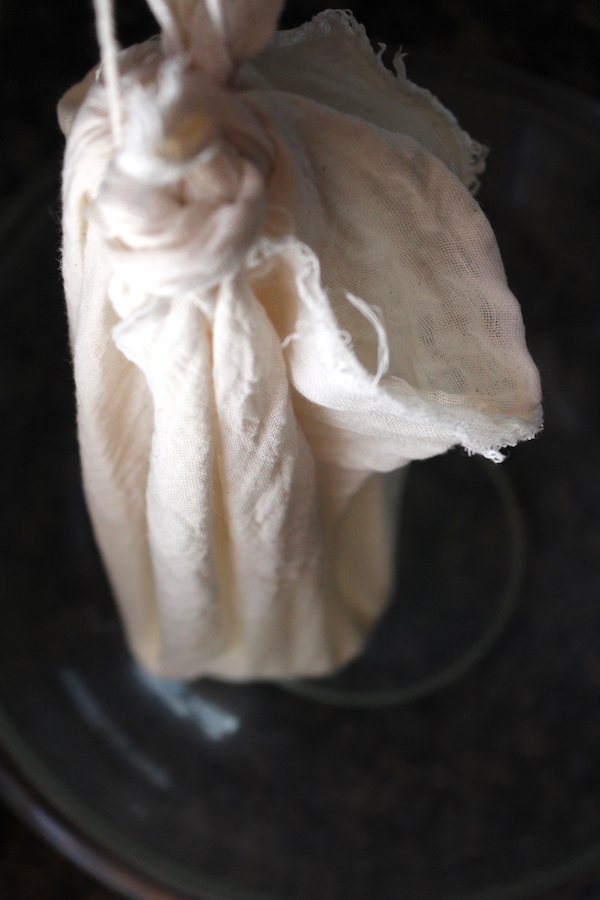
Ingredients and Equipment for Making Yogurt Cheese
Making yogurt cheese couldn’t be less work if it tried: all you need is yogurt, a sieve, cheesecloth, and a bowl.
Since the basic recipe doesn’t require rennet, the process is incredibly straightforward, no fussing about with temperature and curds required (although if you are interested in making a thicker yogurt cheese using rennet, you can find a recipe here).
I like to use homemade cultured yogurt that I’ve made in my yogurt maker, but store-bought whole milk yogurt works equally well.
Look for regular or Greek plain yogurt with at least 2% milkfat, the higher the milk fat percentage the creamier and more rich-tasting the cheese will be.
You’ll want to be diligent about avoiding thickening agents, gelatin, fruit, or added sugars (lactose, which is a type of sugar, is naturally occurring in yogurt). It must be plain, natural yogurt with no other additives. The only ingredients should be milk and/or cream and live active cutlures.
If you plan on using homemade cultured yogurt, you’ll want to use standard yogurt cultures (thermophilic cultures), which produce a thick, creamy yogurt. These are the yogurt strains that need to culture at 90-110 degrees F.
Avoid mesophilic yogurt that cultures at room temperature. Just about all the yogurt you buy in the grocery store is the correct type, and you really have to go out of your way to find mesophilic yogurt anyway.
Yogurt made from goat’s milk or sheep’s milk is a real treat if you can find it, with goat’s milk yogurt making an ultra-rich cheese and sheep’s milk yogurt resulting it a decadent, slightly sweet cheese.
How to Make Yogurt Cheese
To make yogurt cheese, all you need to do is line a sieve with cheesecloth, spoon the yogurt into the sieve and then let it drain into a bowl for anywhere from 4 to 24 hours. You can strain it in the refrigerator, or hung from your cabinets in cheesecloth over a bowl as I’m doing.
As the yogurt drains, the whey will drip into the bowl.
Don’t get rid of the whey after the cheese is finished, it has all kinds of valuable applications in the kitchen. I use it to make these fermented strawberries with honey & whey, and it can also be used in baking, bread making, as stock in stews and soups, and for making Lacto-fermented preserves.
The longer the yogurt drains, the thicker the cheese, so keep that in mind if you’re planning on using it for a particular recipe.
Dips can be made with looser yogurt cheese, whereas spreads and yogurt balls need to be made with yogurt that has drained for a longer period of time. The more yogurt cheese you make, the better idea you’ll have about what kind of texture works best in different recipes.
Once the yogurt cheese has reached the desired consistency, you can use it immediately or transfer it to a container and store it in the fridge.
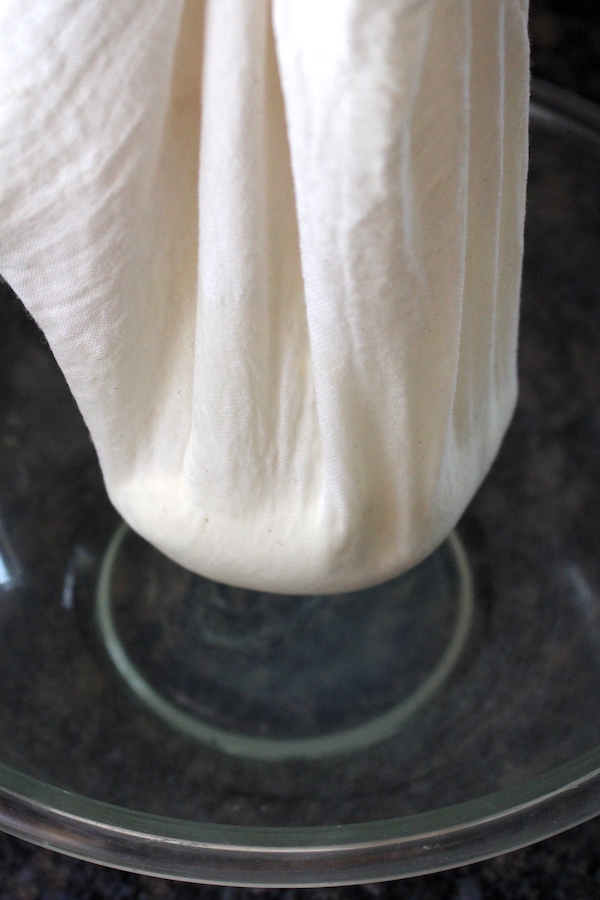
How Long Does Yogurt Cheese Keep?
Generally speaking, yogurt cheese will last 1 to 2 weeks in the fridge.
I’ve definitely had batches last longer than 2 weeks, so I try to judge by smell and taste (if there’s anything funky detectable, the cheese is past its prime). I will say that, in my experience, yogurt cheese made with whole milk yogurt lasts longer than when it’s made with low-fat yogurt, although some people might find the opposite is true, so take my anecdotal experience with a grain of salt.
I would recommend that you avoid using non-fat yogurt when making yogurt cheese, not only does it seem to have a shorter shelf life, the actual finished product has a harsh, overwhelmingly tangy flavor. Low-fat and non-fat yogurts are also more likely to have added thickening and stabilizing agents as well as added sugars or alcohol sugars.
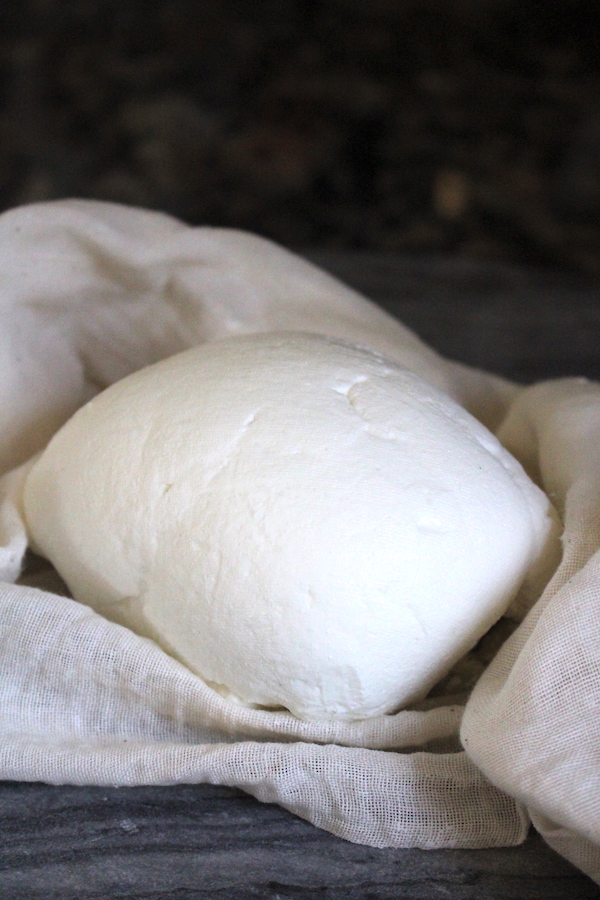
Ways to Use Yogurt Cheese
Now that you’ve made it, here are a few recipes using yogurt cheese:
- Labneh Yogurt Cheese Balls
- Probiotic Cheese Cake
- “Boursin” Yogurt Cheese Spread
- Yogurt Balls with Fresh Herbs
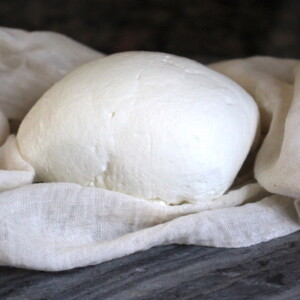
Yogurt Cheese
Ingredients
- 2 cups whole or low-fat yogurt*
Instructions
- Line a sieve with cheesecloth and place it overtop of a bowl.
- In another bowl, whisk together the yogurt until smooth and lump-free.
- Carefully pour the yogurt over the cheesecloth in the sieve.
- Transfer the yogurt, sieve, and bowl to the fridge and allow the yogurt to drain for at least 4 hours and up to 24 hours.
- When the yogurt cheese has reached the desired texture, remove it from the sieve and store in a covered container in the fridge.
- Yogurt cheese can be stored for 1 to 2 weeks, with low fat yogurt cheese having a slightly shorter shelf life than cheese made with whole milk yogurt.
Notes
Cheesemaking & Cultured Dairy Recipes
Looking for more ways to culture dairy in your kitchen?
Pro-biotic and Fermented Foods
Culturing more than just dairy?
- Fermented Strawberries
- How to Make Sauerkraut
- How to make Sauerkraut in a Crock
- How to Make Fermented Pickles
- Homemade Fruit Vinegar
- Beginners Guide to Lacto-fermentation




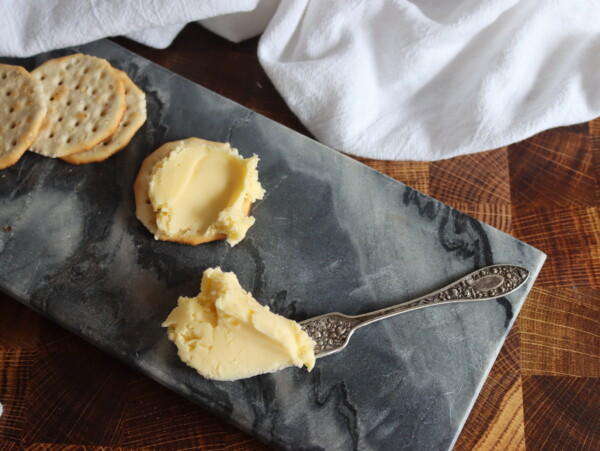
Why should this not be made with mesophilic yoghurt, please?
Different cultures simply result in different types and textures of cheese. For this particular type of cheese, you want to use a thermophilic culture.
I’m wondering about using organic coconut yogurt, since I have to avoid cows’s milk. It does have tapioca starch along with the live cultures. I also wonder about leaving it out on the counter to drain—food safety?? Can the straining be done in the fridge?
That sounds interesting. You will have to update us once you have tried it. You can drain it in the fridge or some people hang it from the kitchen cabinet and let it drain into a bowl.
Strained yogurt. That’s all it is. I don’t understand where the “cheese” misnomer comes from. Any European including Greeks would laugh at this being called cheese. It is strained yogurt!
Made this – so yummy! I was wondering, does it melt like normal cream cheese? I would love to use it for jalapeño poppers
I would think that it would melt fine. Let us know if you decide to give it a try.
I’ve used this strained yoghurt in a recipe that called for cream cheese and it worked well! I didn’t have cheesecloth when I was doing it, but a basket-type coffee filter was a good substitute. I found you can also strain vanilla yoghurt to be a lovely, creamy spread in dessert applications.